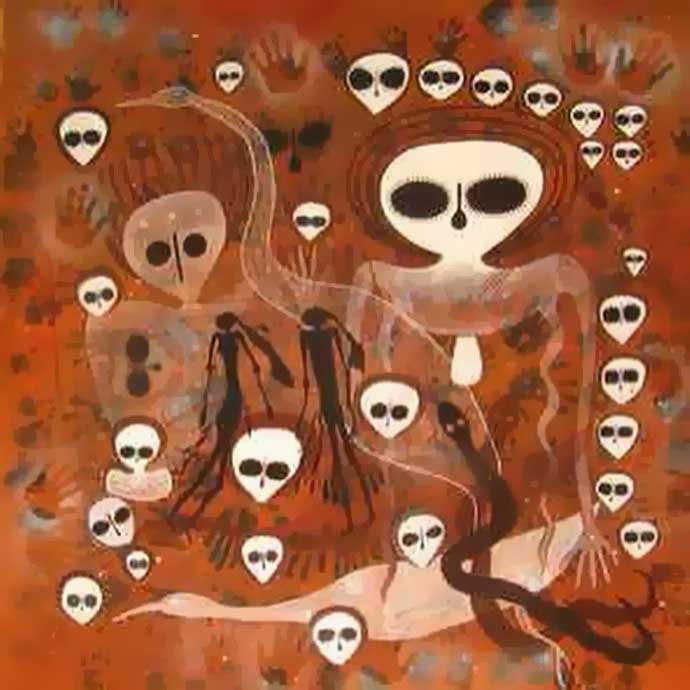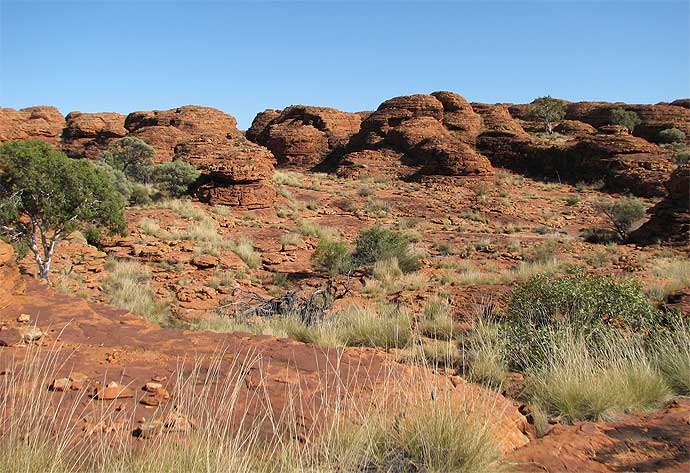First Nation languages could reveal scientific clues to Australia's unique past
This was written By Robin Whitlock, a British freelance journalist with interests in archaeology and the history of the ancient world. It provides us with an outsider's point of view. Not exactly on the money, but a lot closer than the majority of non-indigenous Australians.

Robin Whitlock Ancient Origins 24 May 2015 (Edited)
The loss of Australian First Nations languages could obstruct access to unique scientific information regarding Australia's ancient geological history, according to a story reported by the BBC News.
Ancient Australian First Nations legends passed down over millennia appear to verify recent scientific discoveries regarding Australia's ancient past. For example, cave art suggests an ancient knowledge of the heavens including beliefs in visits by ancient astronauts and a previously untapped record of natural history among the stars. Investigation of such a resource could reveal memories of ancient meteor strikes from thousands of years ago according to research by the University of New South Wales (UNSW).
 Intriguing First Nations rock art depicting Wandjinas, the supreme spirit beings and creators of the land and people
Intriguing First Nations rock art depicting Wandjinas, the supreme spirit beings and creators of the land and people
Dr Duane Hamacher of the UNSW Indigenous Astronomy Group has been able to match First Nations stories to impact craters dating from 4,700 years ago. One such location, at Henbury in Australia's Northern Territory, is reflected in local oral traditions that have been passed down across the generations.

Indigenous First Nations history is believed to span a period of between 40,000 to 45,000 years with some estimates indicating the First Nation peoples presence in Australia some 80,000 years before the arrival of the first Europeans. The number of First Nations groups could amount to several hundred, many of which date to well before the colonization of Australia by the British in 1788. The largest of the groups in existence today is the Pitjantjatjara people who live around Uluru (Ayers Rock) and extend into the Anangu Pitjantjatjara Yankunytjatjara in South Australia.
It is thought that at the time of the first European settlement in Australia, some 250 distinct languages were spoken among First Nations peoples. Given that many of these languages would also have had their own dialects, the number of potential linguistic forms could extend to several hundred, according to authors Michael Walsh and Colin Yallop.
- Australian First Nation peoples knew of variable star Betelgeuse before European astronomers
- Oldest and largest concentration of ancient rock art under threat from Australian Government
- Australian First Nations - Creation Lore

Researchers have fortunately been able to revive one of these ancient languages, previously suppressed by European colonization. The Kauna language was once spoken by First Nations peoples around the present city of Adelaide but it began to disappear from South Australia from the early 1860's.
According to the stories of the Luritja people, a fire-devil arrived on the Earth seeking vengeance for the breaking of sacred laws. The story was handed down across more than 200 generations before the site of this event was finally identified in 1931.
The Henbury Meteorite Conservation Reserve was previously regarded as a taboo 'no-go' area by the Luritja. Scientists have now been able to establish that the 'fire devil' was actually an ancient meteorite that blasted several impact craters into the red-colored sand with an atomic level of power.

Meteoric iron, found in Henbury, Australia, 1931 - Higgins Armory Museum, 2011. Photo by Daderot
(Wikimedia Commons)
"First Nations oral traditions contain detailed knowledge about the natural world" said Dr Hamacher, who leads a group of nine researchers from UNSW's Nura Gili Indigenous programs unit. "By merging scientific data with descriptions in oral tradition we can show that many of the stories are accounts of real-life events. So First Nations stories could lead us to places where natural disasters occurred."
The dozen or so craters created by the meteorite and its fragments have diameters of up to 180 meters across. When scientists first entered the area in 1931, the First Nations guide they had brought with them refused to go any further. Luritja elders later told a local resident that the 'fire devil' will burn and eat anyone who breaks the sacred law.
First Nations peoples hold other stories of ancient natural disasters that have now been shown to be authentic by modern investigation. The Gunditjmara people for instance, tell of a giant wave that swept inland and killed everyone who hadn't gone up to the mountains.
When Dr Hamacher travelled to Victoria with tsunami expert James Goff, also of UNSW, he found a layer of sediment 2 mm deep at a number of different locations between 500 meters and 1 kilometer inland thereby indicating that an ancient tsunami had swept over the area hundreds, perhaps thousands, of years ago.
These and other indigenous stories could be of great benefit to researchers investigating Australia's history and geology. They also reveal an understanding of the universe among ancient societies, the existence of which wasn't widely accepted before.
If First Nations languages and dialects, that are currently at risk, can be protected and revived, who knows what else they may have to offer?
Featured Image: Uluru, also referred to as Ayers Rock, is sacred to the Pitjantjatjara and Yankunytjatjara, the First Nations people of the area. It has many springs, waterholes, rock caves and ancient paintings. Uluru is listed as a World Heritage Site. (Wikimedia Commons)

